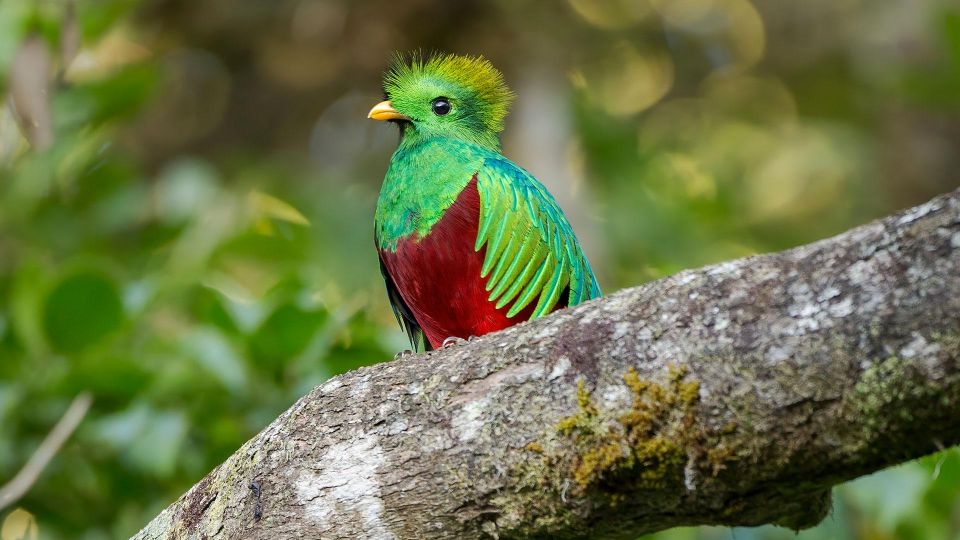March rolls in with a flutter and a flurry, signaling the onset of an avian adventure that sets hearts aflutter among bird watching aficionados. It’s nesting season, a period marked by aerial acrobatics, courtship dances, and the crafting of cozy abodes high up in the forest’s embrace. This is the story of the Quetzal, nature’s own high-flier, whose nesting rituals turn the forests of Costa Rica into a stage for one of nature’s most captivating performances.
The Courtship Carousel
As February’s final days dwindle, male Quetzals embark on a mission of love, diving and darting through the air in a display designed to dazzle. Imagine a feathered Romeo, pirouetting above the canopy at breathtaking heights, only to plunge dramatically towards the earth in a bid to impress. It’s a high-stakes game of avian allure, played out more than 30 meters above the ground, where the line between a crash landing and a successful courtship is as thin as a feather.
Homemaking High Above
By March, the love-struck Quetzals turn their attention to real estate, seeking out the perfect tree trunk to transform into a home for their forthcoming brood. Their criteria? Aged and arid trunks standing sentinel at heights between 3 and 11 meters, offering the ideal blend of privacy and protection. Together, they carve out a niche, a cradle for their future, nestled within the forest’s ancient arms.
The Cycle of Life
In this high-altitude haven, the female Quetzal lays her eggs, entrusting them to the care of both parents in shifts of tireless devotion. Every three hours, they swap roles, a tag team united in purpose. From these eggs emerge chicks, vulnerable and bare, their blind eyes unopened, their bodies devoid of feathers. It’s a tender time, a test of parental patience and perseverance.
As days pass, hints of green begin to speckle their necks, signaling the approach of their maiden flight. Yet, as is often the case with first attempts, their inaugural takeoff more closely resembles a crash landing. But fear not, for their dedicated parents are there, ready to teach, to guide, and to encourage their feathered fledglings to soar once more.
Where to Witness the Wonder
For those drawn to the allure of the Quetzal, there are enclaves of enchantment where these magnificent birds can be observed in their natural ballet:
- Monteverde: A cloud forest sanctuary where Quetzals dance among the mists.
- Los Quetzales National Park and Guarco Canyon: Just a stone’s throw (or a two-hour drive) from San Jose, these locales offer a front-row seat to the spectacle.
- La Amistad International Park (Biolley, Altamira): A haven of biodiversity, where Quetzals share the stage with countless other species.
A Plea for Peaceful Observation
In our quest to catch a glimpse of these avian aristocrats, let’s tread lightly, respecting their realm. The Quetzal, a creature of wild beauty and fragile beginnings, demands our reverence. A misplaced step, a sound too loud, and they might abandon their painstakingly crafted nests. And with such abandonment comes separation, a break in the cycle that can spell the end of their delicate dance.
For those seeking to immerse themselves in the Quetzal quest, Miriam Quetzales beckons. Here, amidst the comforts of a restaurant and the expertise of seasoned guides, you can embark on a journey of discovery, tracing the flight of the Quetzal and perhaps, if fortune smiles, witnessing the wonder of their world.
So, as March dawns, let your spirit take flight alongside the Quetzals. Embrace the adventure, the beauty, and the sheer joy of the season. It’s a time of new beginnings, of nature’s nuanced narratives, and of memories waiting to be made in the canopy’s cradle.


1 comment
[…] Source link […]